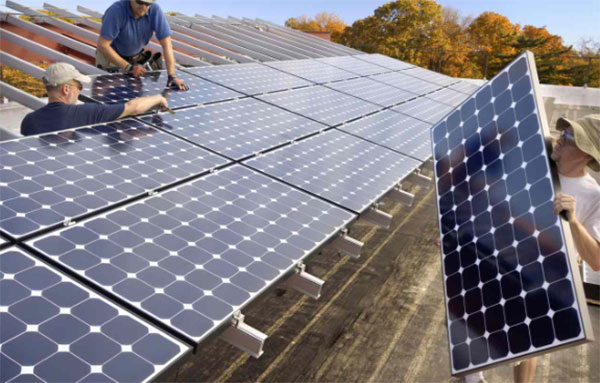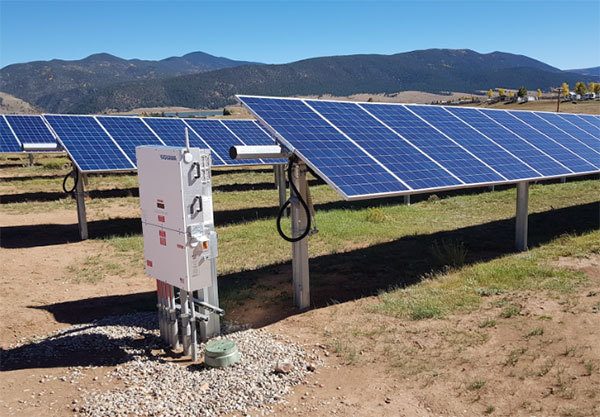Description
To charge a 12V battery, typically one to three 100W solar panels are sufficient, depending on the battery's capacity and sunlight availability.

Solar Panels and 12 Volt Batteries
Basics of Solar Panel Technology
Solar panels, or photovoltaic panels, convert sunlight into electrical energy. They are composed of solar cells, usually made from silicon, that generate electricity when exposed to sunlight. The efficiency of a solar panel, typically ranging from 15% to 20%, is a crucial factor in determining how much energy it can produce. The size and number of solar panels needed depend on the power requirements and available space.
Overview of 12 Volt Batteries
A 12 volt battery, commonly used in automotive and solar applications, stores electrical energy for later use. These batteries come in various types, such as lead-acid, lithium-ion, and AGM (Absorbent Glass Mat), each with distinct characteristics in terms of lifespan, cost, and maintenance needs. The capacity of a 12 volt battery is measured in ampere-hours (Ah), indicating how much current it can provide over a specific period.
The Relationship Between Solar Panels and Batteries
Solar panels and batteries work together in solar energy systems. The solar panels capture sunlight and convert it into electricity, which is then used to charge the batteries. The efficiency of this process depends on factors like the solar panel's power rating, the battery's capacity, and the solar charge controller's quality. A solar charge controller regulates the flow of electricity from the panels to the battery, ensuring it charges efficiently and preventing overcharging, which can damage the battery.
In this system, the power output of solar panels, often measured in watts (W), directly influences the charging speed of the 12 volt battery. For instance, a 100W solar panel under ideal conditions can provide about 8 amps of current at 12 volts. The cost of setting up such a system varies based on the quality and specifications of the components used.

Calculating Solar Panel Requirements
Factors Influencing Solar Panel Efficiency
Solar panel efficiency is impacted by several key factors:
- Material Quality: Higher quality materials like monocrystalline silicon offer better efficiency, typically around 15-20%.
- Temperature: Solar panels operate best at around 25°C. Efficiency decreases by about 0.5% for every degree above this temperature.
- Angle and Orientation: Optimal angle for solar panels varies based on location but generally should face true south in the Northern Hemisphere.
- Shading and Dirt: Even partial shading or dirt on panels can significantly reduce efficiency.
Understanding Battery Capacity and Charge Rates
Battery capacity and charge rates are essential in determining how many solar panels are needed:
- Battery Capacity: Measured in ampere-hours (Ah). A 100Ah battery can supply 100 amps for one hour.
- Charge Rate: Depends on the solar panel's output. A 100W panel can theoretically charge a 100Ah battery in 10-12 hours under ideal conditions.
Solar Irradiance and Geographic Implications
Solar irradiance varies depending on geographic location:
- Peak Sun Hours: Locations near the equator have more peak sun hours compared to those closer to the poles.
- Seasonal Variations: Solar irradiance is higher in summer than in winter in most locations.
To provide a clearer understanding, here's a table summarizing these details:
| Factor |
Detail |
Impact/Value |
| Material Quality |
Monocrystalline silicon |
15-20% efficiency |
| Temperature |
Ideal operating temperature |
25°C, -0.5% efficiency per °C above |
| Angle and Orientation |
Optimal placement |
Facing true south (Northern Hemisphere) |
| Shading and Dirt |
Panel obstruction |
Significant efficiency reduction |
| Battery Capacity |
Energy storage |
100Ah = 100 amps for one hour |
| Charge Rate |
Solar panel output |
100W panel charges 100Ah in 10-12 hours |
| Peak Sun Hours |
Daily sunlight exposure |
Higher near the equator |
| Seasonal Variations |
Changes in solar irradiance |
Higher in summer than in winter |

Solar Panel Setup for Charging 12 Volt Batteries
Selecting the Right Solar Panels
Choosing the correct solar panels involves considering several factors:
- Panel Type: Monocrystalline panels are more efficient but also more expensive. Polycrystalline panels are cheaper with slightly lower efficiency.
- Power Output: A panel's wattage indicates its power output. For a 12V battery, panels typically range from 100W to 300W.
- Size and Weight: Ensure the panels fit the available space and that the mounting system can support their weight.
Solar Charge Controllers and Their Role
A solar charge controller is a crucial component in a solar panel setup:
- Function: It regulates the voltage and current from the solar panels to the battery, preventing overcharging.
- Types: PWM (Pulse Width Modulation) and MPPT (Maximum Power Point Tracking). MPPT is more efficient but also more expensive.
- Selection: Choose a controller with a capacity to handle the total amperage of your solar array.
Wiring and Connections for Optimal Charging
Proper wiring and connections are vital for system efficiency:
- Cable Gauge: Thicker cables reduce energy loss over distance. The right gauge depends on the current and the distance between panels and batteries.
- Connection Method: Series connections increase voltage, parallel connections increase amperage. The choice depends on the solar panel and battery specifications.
- Safety: Use proper connectors and ensure all connections are tight and secure to prevent energy loss and fire hazards.
Practical Tips for Efficiency and Durability
- Regular Maintenance: Clean the solar panels regularly to maintain efficiency.
- Monitoring: Use a monitoring system to track performance and identify any issues quickly.
Practical Considerations for Solar Charging
Maintenance and Care of Solar Panels and Batteries
Proper maintenance significantly extends the life and efficiency of solar panels and batteries.
- Cleaning Solar Panels: Regular cleaning ensures optimal performance. Dust, leaves, and bird droppings can reduce efficiency by up to 25%. Use a soft cloth or brush and mild detergent to clean the panels.
- Battery Care: Check battery terminals for corrosion and clean them as needed. For lead-acid batteries, maintain the water level and ensure they are charged regularly to avoid sulfation.
Troubleshooting Common Issues in Solar Charging Systems
Identifying and addressing common issues quickly ensures the longevity and effectiveness of the solar charging system.
- Inadequate Charging: Often due to incorrect panel orientation or shading. Ensure panels face the optimal direction and are free from obstructions.
- Battery Drain: Can result from overuse or a faulty charge controller. Regularly test the charge controller and monitor battery usage.
- Inverter Problems: If the inverter frequently shuts down or fails to convert power efficiently, check for loose connections or consider replacing it.
Enhancing Efficiency in Solar Charging Systems
Optimizing the efficiency of your solar charging system maximizes the return on your investment.
- Upgrade to MPPT Charge Controllers: MPPT controllers adjust their input to harvest the maximum power from the solar panels, improving efficiency by up to 30% compared to PWM controllers.
- Use Quality Cabling: Minimize power loss by using the appropriate gauge of wiring for the distance between your solar panels and batteries.
- Regular System Checks: Periodically check the entire system, including panels, batteries, controllers, and inverters, for any signs of wear or damage.

Case Studies: Solar Charging in Action
Residential Solar Panel Setups for 12V Batteries
Residential setups demonstrate how homeowners harness solar power for daily use.
- System Components: Typically includes 100W to 300W solar panels, 12V deep-cycle batteries, MPPT charge controllers, and inverters.
- Energy Usage: Average homes might use systems to power small appliances, lighting, and charging stations.
- Cost and ROI: Initial investment varies but can offer significant long-term savings on electricity bills. Payback periods depend on energy usage and local solar incentives.
Mobile and Off-grid Applications Solar charging is essential in situations where grid power is unavailable or unreliable.
RVs and Boats: Often use compact, efficient setups with flexible solar panels and high-capacity lithium batteries for extended travel.
Remote Locations: Solar setups power communication devices, water pumps, and basic amenities in remote areas.
Challenges: Mobile applications must balance efficiency with space constraints and often require more robust systems to handle movement and varying weather conditions.
Commercial and Industrial Solar Charging Solutions Large-scale solar installations cater to the high energy demands of commercial and industrial sectors.
Scale and Complexity: Involves large arrays of solar panels, often exceeding 1000W, coupled with substantial battery banks and advanced management systems.
Applications: Powering manufacturing facilities, data centers, and large commercial buildings.
Sustainability and Cost-Savings: Businesses utilize solar charging to reduce carbon footprint and electricity costs. Tax incentives and grants can further enhance the financial viability of these projects.







